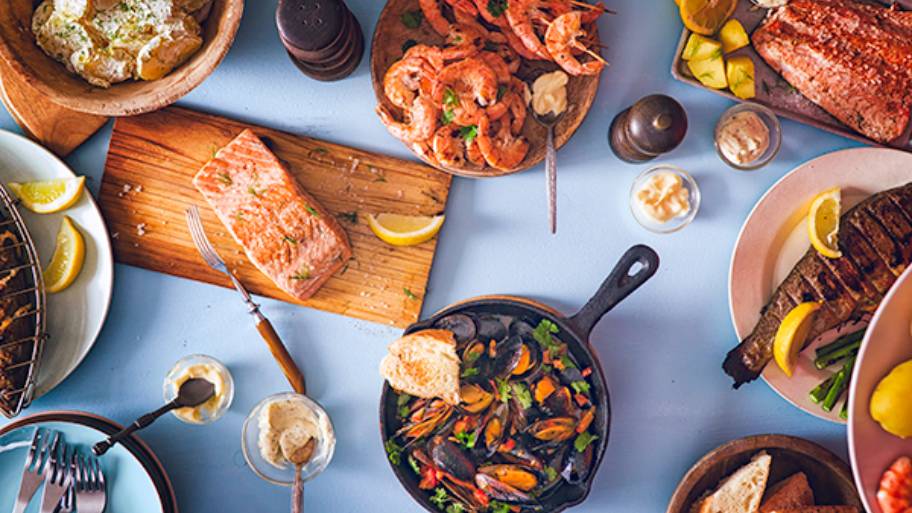Product Integrity Manager, Alison Roel, explains how DNA testing helps avoid seafood fraud.
Food fraud, simply put, is the selling of food products with a misleading label, description or promise.
Throughout history, dubious traders have looked to profit from substandard, less desirable or counterfeit products. From chalk in flour to horsemeat sold as beef – food fraud is as old as industrial food production itself. Tricks of the trade have included colouring vegetables with copper[i]; diluting milk with water[ii]; substituting herbs for other plants[iii]; and bulking up lamb curries with beef or chicken[iv].
‘Food scandals’ leave consumers feeling duped, misled and distrustful of retailers and brands.
The problem with fish
Scientific investigations have repeatedly revealed high rates of mislabelling in seafood [v]. Although it is possible for seafood to become unintentionally mixed with different species, the international trade and price variability of fish provides ample temptation. As a result, lower value fish are sometimes substituted for higher value species.
DNA testing by organisations such as Oceana reveals the extent of the problem. Studies in 2015 found 43% salmon sold in the USA to be mislabelled[vi], and that 30% seafood served in Brussels restaurants did not correspond to the species ordered[vii]. A 2016 study comparing 51 studies, accounting for 4,500 seafood samples, found an average mislabelling rate of 30%[viii].
With seafood often passing through the hands of numerous suppliers on its journey from boat to plate, it’s not just the consumers being duped – it’s also retailers and brands.
Finding a solution
Following the formation of the MSC in 1997 we faced two significant challenges: 1) encourage fisheries to verify their sustainability through MSC certification and 2), just as importantly, create a supply chain which would give consumers, chefs, brands and retailers confidence that seafood with the MSC blue label comes from a certified sustainable fishery.
In 1999 we began consultation to find a solution. The aspiration was a globally relevant set of requirements, robust enough to ensure correct labelling throughout the MSC certified supply chain, but not too arduous for businesses to apply. This vision became a reality in 2001 with the launch of the MSC Chain of Custody Standard.
In order to trade MSC certified seafood, companies must have a valid MSC Chain of Custody certificate. These companies are audited regularly to ensure that they meet our requirements: MSC certified seafood can only be purchased from certified suppliers and must be identifiable at all times, segregated from non-MSC certified seafood and sold with the correct paperwork identifying it as certified.
This means that seafood sold with the MSC blue label is independently verified through every step of the supply chain, so you can be sure it comes from a sustainable fishery.
How we know it works
The MSC regularly monitors this supply chain in order to ensure that our strict requirements are followed correctly.
Since 2009, DNA tests on hundreds of MSC certified seafood products, all over the world, have shown that incidence of mislabelling amongst MSC labelled seafood are less than one percent.
Given industry levels of mislabelling, these results are quite remarkable. But we’re not complacent. Any non-conformities are thoroughly investigated and corrections made to ensure that the MSC Chain of Custody Standard continues to be applied correctly.
For example an investigation into the one mislabelled sample in our 2015 DNA research found a product labelled as containing southern rock sole, was actually northern rock sole. Both species are very similar and fortunately both were MSC certified. However, a full investigation found errors with documentation in the supply chain. Actions have now been taken to ensure that this error does not reoccur.
The MSC Chain of Custody Standard is also used as a supply chain assurance system of seafood certified to the Aquaculture Stewardship Council (ASC) standard for responsibly farmed seafood.
Therefore, whenever you see the MSC and ASC ecolabels on seafood products, you can be confident, not only that they have been sustainably and responsibly sourced, but that they are what the labels say they are.
Watch a film about the MSC’s DNA testing program
Find out more about the MSC's traceability requirements
Sources
[i] http://www.jjon.org/joyce-s-environs/Poisonous-peas
[ii] https://www.taylorfrancis.com/chapters/edit/10.1201/9781315153414-15/food-fraud-detection-prevention-regulations-jamuna-bai-ravishankar-rai
[iii] http://www.bbc.co.uk/news/uk-33636628
[iv] http://www.which.co.uk/news/2014/04/food-fraud-whats-in-your-takeaway-362886/
[v] https://www.fas.org/sgp/crs/misc/R43358.pdf
[vi] http://usa.oceana.org/publications/reports/oceana-reveals-mislabeling-americas-favorite-fish-salmon
[vii] http://eu.oceana.org/en/press-center/press-releases/one-out-three-fish-served-brussels-not-what-consumers-pay
[viii] http://www.sciencedirect.com/science/article/pii/S095671351530270X

